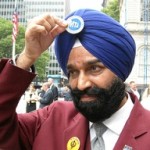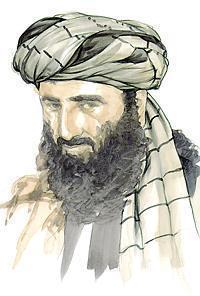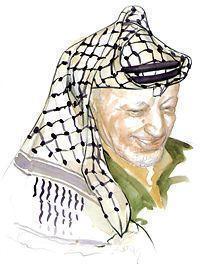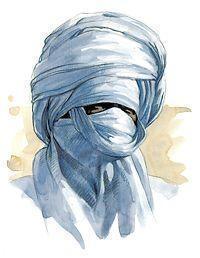POUR MOI, C'EST KIF-KIF : THEY ALL MAKE ME SICK !
SIKH vs MUSLIM HEADGEAR: Understand the differences
 Many
people mistake Sikhs for Muslims due to their turbans, which often
makes Sikhs targets of attacks meant for Muslims.
Many
people mistake Sikhs for Muslims due to their turbans, which often
makes Sikhs targets of attacks meant for Muslims.
Please study the differences in Sikh (right) and Muslim headgear below. You might be able to save a Sikh’s life one day.
If you see a man walking down the street wearing a turban, there is 99.9% chance that he is a Sikh, a follower of a monotheistic religion that started in the 15th century in India. Sikhs proudly wear the turban as part of their religious and cultural heritage. Sikhs are often mistaken for Muslims or Arabs. They are neither. Sikhism is an independent religion and is in no way related to Islam.
Seattle Times
 SIKH MEN commonly
wear a peaked turban that serves partly to cover their long hair, which
is never cut out of respect for God’s creation. Devout Sikhs also do
not cut their beards, so many Sikh men comb out their facial hair and
then twist and tuck it up into their turbans along with the hair from
their heads. Sikhism originated in northern India and Pakistan in the
15th century and is one of the youngest of the world’s monotheistic
religions. There are an estimated 18 million Sikhs in the world, with
some 2 million spread throughout North America, Western Europe and the
former British colonies.
SIKH MEN commonly
wear a peaked turban that serves partly to cover their long hair, which
is never cut out of respect for God’s creation. Devout Sikhs also do
not cut their beards, so many Sikh men comb out their facial hair and
then twist and tuck it up into their turbans along with the hair from
their heads. Sikhism originated in northern India and Pakistan in the
15th century and is one of the youngest of the world’s monotheistic
religions. There are an estimated 18 million Sikhs in the world, with
some 2 million spread throughout North America, Western Europe and the
former British colonies.
 MUSLIM RELIGIOUS ELDERS,
like this man from Yemen, often wear a turban wrapped around a cap
known in Arabic as a kalansuwa. These caps can be spherical or conical,
colorful or solid white, and their styles vary widely from region to
region. Likewise, the color of the turban wrapped around the kalansuwa
varies. White is thought by some Muslims to be the holiest turban color,
based on legends that the prophet Mohammed wore a white turban. Green,
held to be the color of paradise, is also favored by some. Not all
Muslims wear turbans. In fact, few wear them in the West, and in major
cosmopolitan centers around the Muslim world, turbans are seen by some
as passé.
MUSLIM RELIGIOUS ELDERS,
like this man from Yemen, often wear a turban wrapped around a cap
known in Arabic as a kalansuwa. These caps can be spherical or conical,
colorful or solid white, and their styles vary widely from region to
region. Likewise, the color of the turban wrapped around the kalansuwa
varies. White is thought by some Muslims to be the holiest turban color,
based on legends that the prophet Mohammed wore a white turban. Green,
held to be the color of paradise, is also favored by some. Not all
Muslims wear turbans. In fact, few wear them in the West, and in major
cosmopolitan centers around the Muslim world, turbans are seen by some
as passé.
 AFGHAN MUSLIM MEN wear
a variety of turbans, and even within the Taliban, the strict Islamic
government that controls much of the country, there are differences in
the way men cover their heads. This Taliban member, for example, is
wearing a very long turban — perhaps two twined together — with one end
hanging loose over his shoulder. The Taliban ambassador to Afghanistan,
on the other hand, favors a solid black turban tied above his forehead.
And some men in Afghanistan do not wear turbans at all, but rather a
distinctive Afghan hat.
AFGHAN MUSLIM MEN wear
a variety of turbans, and even within the Taliban, the strict Islamic
government that controls much of the country, there are differences in
the way men cover their heads. This Taliban member, for example, is
wearing a very long turban — perhaps two twined together — with one end
hanging loose over his shoulder. The Taliban ambassador to Afghanistan,
on the other hand, favors a solid black turban tied above his forehead.
And some men in Afghanistan do not wear turbans at all, but rather a
distinctive Afghan hat.
IRANIAN MULLAHS wear black or white turbans wrapped in the flat, circular style shown in this image of Iranian supreme leader Ayatollah Ali Khamenei. The word turban is thought to have originated among Persians living in the area now known as Iran, who called the headgear a dulband.
 ARAB MUSLIM KAFFIYEH is not technically a turban. It is really a rectangular
ARAB MUSLIM KAFFIYEH is not technically a turban. It is really a rectangular  piece
of cloth, folded diagonally and then draped over the head — not wound
like a turban. Yasser Arafat, the Palestinian leader, has made the
kaffiyeh famous in recent times. However, the kaffiyeh is not solely
Palestinian. Men in Jordan, Saudi Arabia and the Arab Persian Gulf
states wear kaffiyehs in colors and styles that are particular to their
region. Jordanians, for example, wear a red and white kaffiyeh, while
Palestinians wear a black and white one. And a man from Saudi Arabia
would likely drape his kaffiyeh differently than a man from Jordan. The
black cord that holds the kaffiyeh on one’s head is called an ekal.
piece
of cloth, folded diagonally and then draped over the head — not wound
like a turban. Yasser Arafat, the Palestinian leader, has made the
kaffiyeh famous in recent times. However, the kaffiyeh is not solely
Palestinian. Men in Jordan, Saudi Arabia and the Arab Persian Gulf
states wear kaffiyehs in colors and styles that are particular to their
region. Jordanians, for example, wear a red and white kaffiyeh, while
Palestinians wear a black and white one. And a man from Saudi Arabia
would likely drape his kaffiyeh differently than a man from Jordan. The
black cord that holds the kaffiyeh on one’s head is called an ekal.
 DESERT PEOPLES & MUSLIM TERRORISTS have
long used the turban to keep sand out of their faces, as this man from
Africa is likely doing. Members of nomadic tribes have also used turbans
to disguise themselves. And sometimes, the color of a person’s turban
can be used to identify his tribal affiliation from a distance across
the dunes. This man’s turban is a very light blue. In some parts of
North Africa, blue is thought to be a good color to wear in the desert
because of its association with cool water.
DESERT PEOPLES & MUSLIM TERRORISTS have
long used the turban to keep sand out of their faces, as this man from
Africa is likely doing. Members of nomadic tribes have also used turbans
to disguise themselves. And sometimes, the color of a person’s turban
can be used to identify his tribal affiliation from a distance across
the dunes. This man’s turban is a very light blue. In some parts of
North Africa, blue is thought to be a good color to wear in the desert
because of its association with cool water.
(barenakedislam.com)
Archives
Indira Gandhi assassinée : des sikhs se réjouissent
Date de diffusion : 31 octobre 1984« Khalistan !» s'exclament quelques centaines de sikhs de Vancouver réunis spontanément pour manifester leur joie à l'annonce de la mort de la première ministre de l'Inde, Indira Gandhi.
Les manifestants sont venus
crier vengeance et réclamer la création d'un État sikh indépendant,
comme l'explique Jean-Michel Leprince dans son reportage. Avec 60 000
membres, la communauté sikhe de Vancouver est la plus importante au
Canada. Cette satisfaction n'est cependant pas unanime. Certain membres
de la communauté désapprouvent le geste. En Inde, c'est la colère. Des
sikhs se font lyncher dans les rues de New Delhi.
À la suite des événements du Temple d'or, des membres de la communauté sikhe du Canada réagissent avec violence contre le gouvernement indien. C'est ainsi que le haut-commissaire de l'Inde au Canada se fait ruer de coups à Winnipeg. Les appels des leaders religieux et politiques sikhs se font entendre au Pendjab, mais aussi dans les diasporas britannique, américaine et canadienne.
À la suite des événements du Temple d'or, des membres de la communauté sikhe du Canada réagissent avec violence contre le gouvernement indien. C'est ainsi que le haut-commissaire de l'Inde au Canada se fait ruer de coups à Winnipeg. Les appels des leaders religieux et politiques sikhs se font entendre au Pendjab, mais aussi dans les diasporas britannique, américaine et canadienne.
Des réseaux d'organisations radicales
s'activent, particulièrement dans la région de Vancouver. Le 23 juin
1985, la réponse de ces groupes est catégorique : le vol 182 d'Air India
explose; le vol 301, lui, s'en tire.

Aucun commentaire:
Enregistrer un commentaire